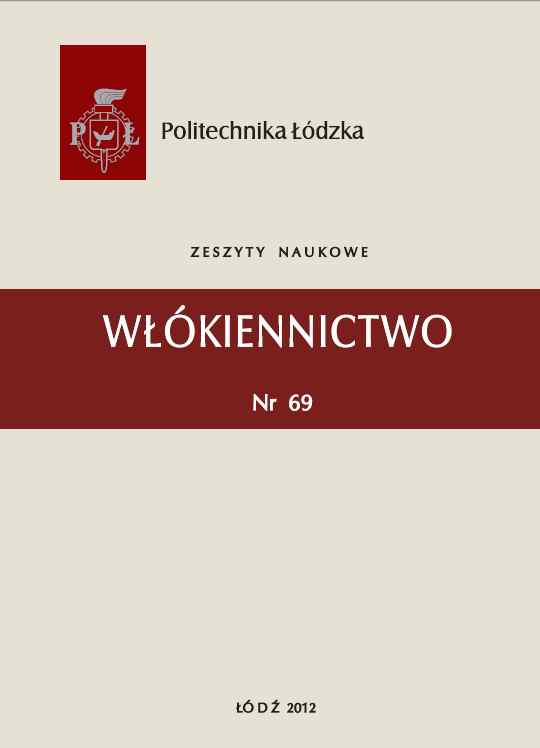Abstract
Research of the conditions of manufacturing two types nanocomposite PAN precursor fibers was developed. Depending on the type introduced nanoadditive to the PAN fibres, the carbon fibres obtained on their basis will be used for medical or technical applications.
In the group of the precursor fibers for medical applications the manufacturing conditions has been developed for fibers containing silver or a system of two nano-additives: silver and hydroxyapatite. It is expected that the carbon fibers obtained from this type of nanocomposite fibers will exhibit antibacterial, or antibacterial and osteoconductive activity, acting as scaffold for bone reconstruction.
In the group of the precursor fibers for technical applications developed conditions for the production of nanocomposite PAN fibers containing multiwalled carbon nanotubes. It is expected that the presence of the oriented carbon structures (carbon nanotubes) in precursor at the stage of carbonization, can contribute to a graphite like structure of fibres already in the carbonization process.
Based on the initial testing of carbonized fibers containing nano-silver and a system of two nano-additives (silver and hydroxyapatite) it was shown that the tensile properties of obtained carbon fibers are adequate for their medical use (500 MPa). Higher level of strength was obtained in case of the carbon fibers obtained from a precursor containing carbon nanotubes (900 MPa).
References
Cripps D.: Low cost carbon fibres open up new applications. Reinforced Plastics. Vol. 44, Issue: 1, Part 1, 2000, s. 10-14.
Carbon fibre skateboard outclasses wood; Reinforced Plastics. Volume: 49, Issue: 2, February, 2005, pp. 5.
Donnet J.-B., Wang T. Ku., Peng J.C.M., Rebouillat S.: Carbon Fibers, Third Edition, Revised and Expanded; Marcel Dekker AG Basel 1998.
Morgan P.: Carbon fibers and their composites; Taylor & Francis 2005
Chłopek J.: Kompozyty w medycynie; Kompozyty (Composites). Vol. 1, 2001, s. 50-54.
Błażewicz M.: Carbon materials in the treatment of soft and hard tissue injuries. European Cells and Materials. Vol. 2, 2001, s. 21-29.
Mikołajczyk T.: Modyfikacja sposobu wytwarzania włókien poliakrylonitrylowych.
Haberko K., Haberko M., Pyda W., Pedzich Z., Chłopek J., Mozgaw W., Bucko M., Sawicki B.: Sposób otrzymywania naturalnego hydroksypatytu z kości zwierzęcych; Patent Polski P-359960/2003.
Mikołajczyk T., Szparaga G., Janowska G.: Influence of silver nano-additive amount on the supramolecular structure, porosity, and properties of polyacrylonitrile precursor fibers; Polymers for Advanced Technologies; Vol. 20, 2009, s. 1035-1043.
Mikołajczyk T., Szparaga G.: Influence of Fibre Formation Conditions on the Properties of Nanocomposite PAN Fibres Containing Nanosilver. FIBRES & TEXTILES in Eastern Europe, Vol. 17, No. 4 2009, s. 30-36.
Mikołajczyk T., Szparaga G., Rabiej S., Fraczek-Szczypta A.: Influence of Formation Conditions on the Structure and Properties of Nanocomposite PAN Fibres Containing Silver and Hydroxyapatite Nanoadditives. FIBRES & TEXTILES in Eastern Europe, Vol. 18, No. 5 2010, s. 16-23.
Chae H.G., Choi Y.H., Minus M.L., Kumar S.: Carbon nanotube reinforced small diameter polyacrylonitrile based carbon fiber; Composites Science and Technology, Vol. 69, 2009, s. 406-413.
Min B.G., Sreekumar T.V., Uchida T., Kumar S.: Oxidative stabilization of PAN/SWNT composite fiber; Carbon, Vol. 43, 2005, s. 599-604.

